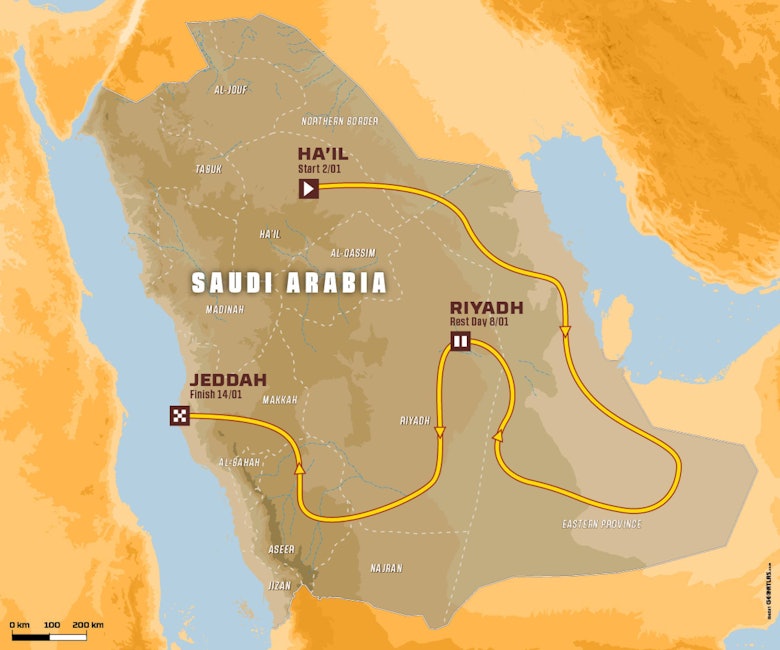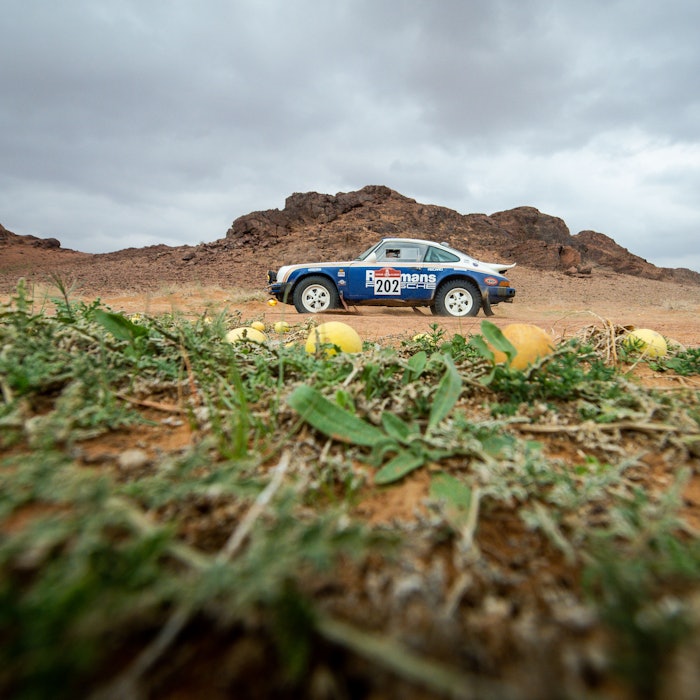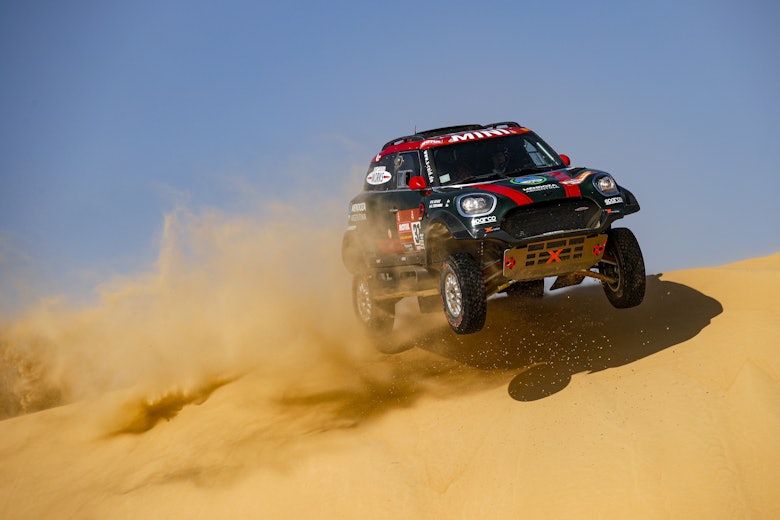The biggest news surrounding the 2022 Dakar Rally route unveiling by event director David Castera and the Amaury Sport Organisation was that, after a year on the sidelines, the infamous Empty Quarter will again feature on the classic rally raid.
Covering a vast area equivalent to the size of France, the Empty Quarter – or better, the Rub al-Khali desert – offers some of the most challenging dunes in Saudi Arabia and will be home to three exclusively sand stages, including the Marathon Stage, during the 44th edition.
Having featured in the inaugural Dakar in Saudi Arabia two years ago, the Empty Quarter was excluded from this year’s edition.
Castera and the ASO however understood the wealth of potential in the Empty Quarter and have devised a route encompassing the mammoth dunes, while ensuring that competitors remain safe throughout.

“In terms of terrain, the route will be characterized in particular by a push into the Empty Quarter: a vast expanse of desert with sands and dunes that beckon the drivers and crews of the rally,” Castera said following the reveal of the 2022 route.
“This expedition will require changes in the way we travel, for example, moving the caravan during the rest day.”
The Empty Quarter is known for its high-speed stretches but came under scrutiny following the death of motorbike rider Paulo Gonçalves in 2020.
To aid safety measures for 2022, the ASO has decided to focus on including more dunes for its three stages in the region of south-east Saudi Arabia, with the sections deemed more dangerous reserved to liaison instead of timed special stages.
I’d love to delve deeper into the Empty Quarter; it’s a terrain that works really well with drivers like meNani Roma
The return has received praise from some of the Dakar’s biggest names, including 14-time winner Stéphane Peterhansel.
“In the first year, the transition to the Empty Quarter was a little too long, because we were keen to get around the whole country,” Peterhansel said.
“But since he has two years of experience in Saudi Arabia, David Castera was able to adjust everything to the best of his abilities to make this stretch interesting. If it’s sand we are looking for, we’re in luck, and it will be a nice route because it will be a good test of our ability to get through the sand challenges as well as off-road navigation.”
Motorbike veteran and current Acciona Extreme E driver Laia Sanz – who announced on Tuesday that she will be contesting the 2022 Dakar in a car – believes the dunes will shift the focus to driving rather than punctures, which became a common theme in 2021 primarily because of the rocky landscapes.

The untold stories of Dakar 2021
From the angry to the crazy to a bit of business, there were plenty of fascinating tales from Saudi Arabia this year
Prodrive Bahrain Raid Xtreme’s Sébastien Loeb was particularly hit by punctures this year, as was Toyota Gazoo Racing’s Nasser Al-Attiyah and the Century buggies of Brian Baragwanath and Mathieu Serradori; the latter pair while fighting for top three stage times.
“I love the idea of more sand,” Sanz said.
“On a motorbike, you get hit by a lot of stones…and in a car, you get slowed down by punctures.
“A Dakar with more dunes and new stages is just what we’ve been waiting for. Saudi Arabia is a huge country with some really beautiful landscapes that we can continue to explore. I can’t wait to see this Dakar.”
While tire management and punctures are – and should be – part of the Dakar, the inclusion of more dunes not only reduces the impact of misfortune, but also adds extra importance to another of 2021’s talking points, navigation.

Photo: ASO/DPPI
Loeb’s BRX team-mate Nani Roma believes the dunes play into his hands better than others.
“I’d love to delve deeper into the Empty Quarter; it’s a terrain that works really well with drivers like me,” Roma explained.
“The sand adds an extra element of stress, because if you make a mistake on sand, it generally has worse consequences, but I adapt to these kinds of situations really well. I really thrive in them. More sand, more dunes, more off-road driving, more proper cross-country rallying… I’m excited.”
We’ll have to wait until November to know exactly how the treacherous Empty Quarter will look, but in returning to the Rub al-Khali desert, it is certain that crews and competitors will have trouble forgetting their time in the largest expansive mass of pure sand in the world.





